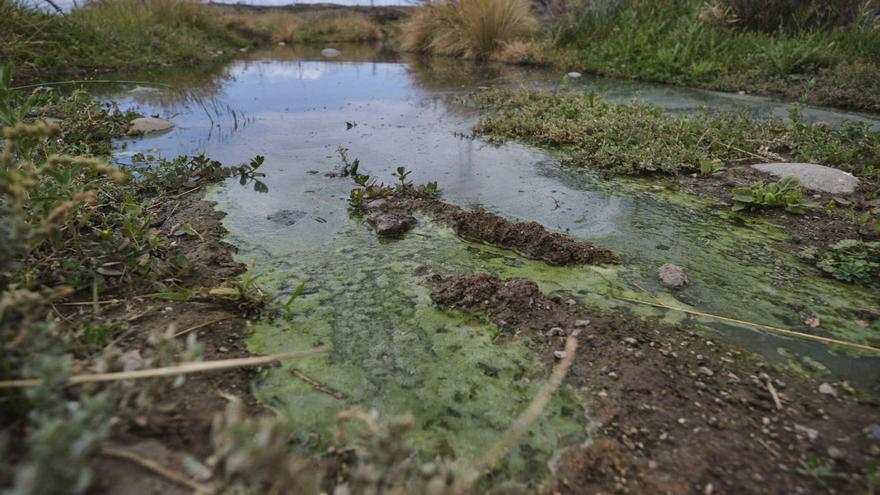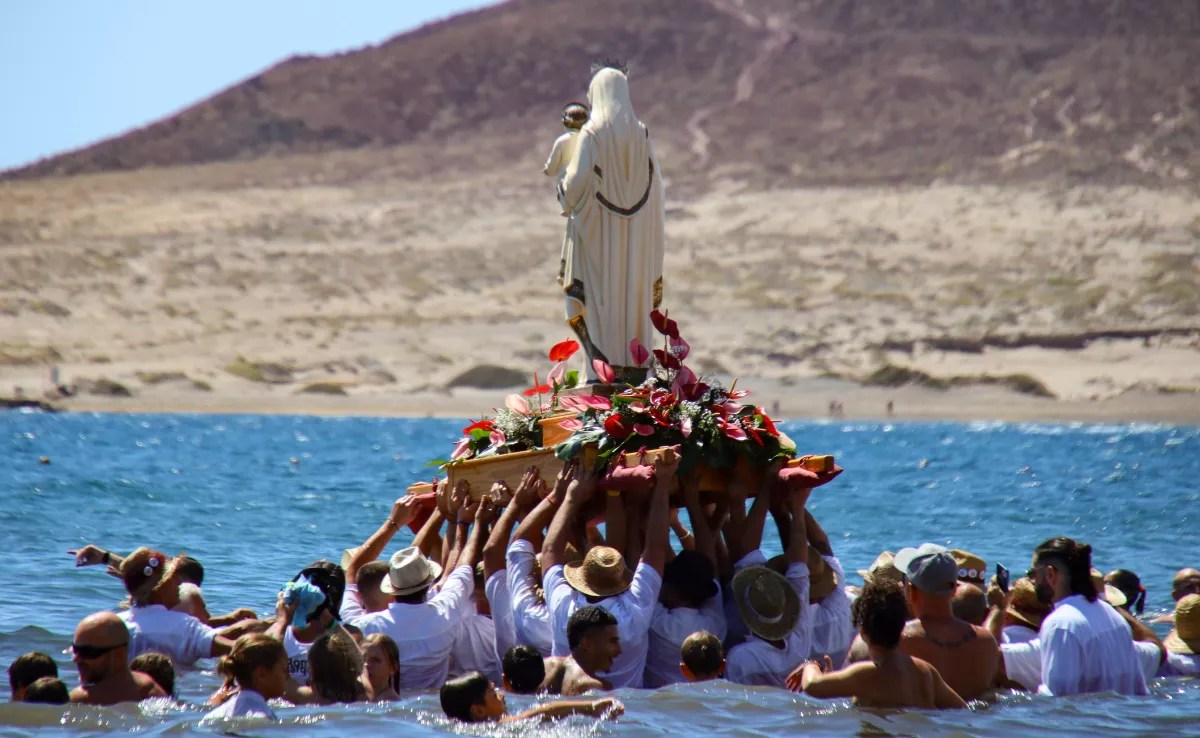
The political, social and environmental denunciation and criticism group noincineraciontenerife was the first to warn of the serious risk to health and the environment involved the formation of a sewage wetland in an environment near the coast of the Industrial Estate Passion fruit. He did it at Easter 2012. Ten years later, history repeats itself. The growth experienced “due to the overflow and discharge of wastewater” from this industrial complex already affects the Middle Beach, adjacent to the Port of Granadilla. An enclave used by bathers and, above all, by campers.
It so happens that in the Polígono Industrial Granadilla a Industrial Wastewater Treatment Plant (edari). This project is underway and the forecast is for the work to be completed during the current year and for the new infrastructure to come into service next year. In fact, it is one of the actions referred to by the mayor of Granada, José Domingo Regalado, when he is questioned about the actions that will solve the problem of discharges and sanitation in this municipality. He clarifies the alderman that the treatment plant of the Polígono is not the responsibility of the City Council. In any case«it is a very important and relevant work for Granadilla de Abona», said the manager.
Meanwhile, from the area south of the Granadilla Port campers and users of the Middle beach flee because it is “stinking, unhealthy and dangerous”, due to the invasion of the sewage that has come to form this “smelly lake”, according to another definition. The proximity of the lagoon to the Callaos beach is such that it invades the area affected by the maritime-terrestrial public domain. «A decade later (…), it has almost permanently taken over the beachfront. It was curious to see the campers this Holy Week settle on the surrounding hills, but far from that area, simply because it is pestilent, unhealthy and dangerous».
First steps
It was the Canarian Forum against Incineration (previous name of the group) that informed the Nature Protection Service (seprona), department of the Civil Guard, the existence of this discharge of unhealthy water in 2017. But its origin dates back to 2012. In April of that year, the Forum denounced and documented (with images and video) that “a group of campers was surrounded, in a matter of minutes, by highly pestilential wastewater in the Polígono Industry of Granadilla”. A public complaint that this group publicly exposed again in 2014, given the evidence that what is now a dangerous focus for health was being formed, according to the complainants.
The space occupied by this lagoon, wetland lake or stream –such terms have been used to refer to the situation– and the time elapsed in its formation has not only increased the number of dead birds and more fauna, but has also germinated scrub abundant and a cane field.
“The definitive work will come when the industrial wastewater treatment plant of the Polígono de Granadilla de Abona”, said Marcos González Alonso, the councilor responsible for General Services and the Environment of Granadilla de Abona, in March 2020.
the treatment plant
The company that manages the Granadilla Industrial Estate awarded the joint venture formed by Cadagua and Ferrovial Construction, for 5,771,660 euros, the drainage line and the treatment plant, which will have the capacity to treat 1,120 cubic meters per day. This Edari has been under construction since June 16, 2021 and has 18 months to complete its construction, as well as six months of testing. It will serve to purify the waters coming from most of the Granadilla Industrial Estate, as well as those generated by the activity of the port located next to this complex and the so-called DISA Sector, in the same industrial area. This infrastructure will replace the absorbent well in use and proposed as an eventual solution to the pestilent wetland. In it, it was contemplated to complete the drainage conduit to the submarine outfall that rests on the Port of Granadilla.
The property
The Sociedad Polígono Industrial de Granadilla SA is the entity that owns the land and promotes the urban planning actions in this area. It is public and is owned by the Cabildo de Tenerife, which owns 40%; the Canary Islands Government, holder of another 40%; by the City Council of Granadilla de Abona, which appears with 10%, while the remaining 10% is in the hands of the Public Business Land Entity (Sepes). The area of the Polygon amounts to 5,701,784 square meters.















